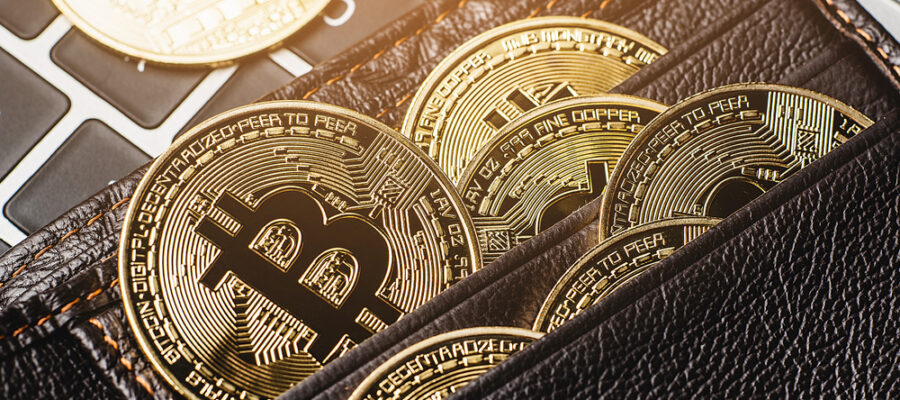Can Children Utilize Crypto?
Children using crypto is to some extent, a gray area. Various regulations require most crypto exchanges to confirm users’ identities to avert problems like fraud or ensure they meet the lawful age requirements.
Centralized wallets and exchanges comprise 50% of the industry. The regulatory, compliance-focused side of crypto is created to operate within the legal system confines and offer a controlled environment for selling, purchasing, and selling digital assets.
The other half comprises the decentralized, permissionless blockchain world. Anybody connected to the internet can create a wallet, interact with DApps, and launch tokens without confirming their age or offering private data.
A crypto wallet can be created for children, provided parents teach them about security practices, ethics, and possible dangers.
The Age Limit for a Child to Acquire a Crypto Wallet
Despite the absence of a universal minimum age for owning a crypto wallet, parents can still open accounts for their kids. For example, in Coinbase, a user should be at least 18 years old since most crypto platforms establish age limits to adhere to legal requirements.
In several cases, a child can begin using a wallet under the supervision of their parents at a young age. However, it is important to select platforms that permit them to access services with parental approval.
Some do’s to consider include:
- Secure offline storage of recovery phases
- Monitoring wallet activity
- Using trusted wallets from official sources
- Using testnets for practice.
Some don’ts include:
- Dismissing cybersecurity basics
- Saving recovery phrases online
- Permitting unsupervised use
- Overlooking malpractice risks
Setting up a Crypto Wallet for a Child
The steps involved include:
Downloading MetaMask
One should visit the MetaMask app store or website and explain the significance of using the right source to avert phishing scams. For mobile devices, a person can download the MetaMask extension for Firefox, Edge, or Chrome.
Wallet Creation
MetaMask will guide a person through the setup process for a new wallet. The generated 12-word recovery phrase should be written on paper, and an explanation of the importance of keeping it safe should be provided.
Including Ethereum in the Wallet
A small Ether amount should be added to MetaMask to cover gas fees. One can explain how the fee functions and how to check network congestion.
Executing the First Transaction
In this step, the child acquires first-hand experience with the blockchain fundamentals. One should guide them through a simple transaction, such as purchasing a low-cost NFT from a platform such as OpenSea.
Recapping Security Fundamentals
One should strengthen cybersecurity skills that will safeguard funds and wallets. One may also practice real-life scenarios, such as what should be done if someone asks for the seed phrase.
Unlocking Blockchain Games With a Crypto Wallet
Children should be introduced to DApps they can utilize with MetaMask. Examples of options to consider include:
- Hamster Kombat
- Axie Infinity
- Catizen
Children should be motivated to monitor their wallet activity frequently to ensure transparency and identify suspicious activities.
Later Steps and Financial Literacy
For an older child, a crypto wallet can be a robust tool for teaching financial literacy. The Bitcoin Rainbow Chart can be utilized in technical analysis.
Children can be encouraged to explore blockchain projects by reading white paper on tokens. Besides, a small weekly allowance can be sent to practice basic strategies such as dollar-cost averaging.
Teaching Token Creation
Parents should monitor malpractice. However, teaching kids about token management and creation is also crucial.
A parent should tell the child what a token is and how it is utilized. They should guide them through decisions such as crucial token details and whether it should have extra functionality.
The Risks of Owning a Crypto Wallet
Examples of risks linked to introducing children to crypto include:
- Illegal activities such as rug-pulling have irreversible consequences
- Exploitation and scams
- Cybersecurity susceptibilities
- The financial and emotional risks of market unpredictability
- Peer pressure and overexposure to blockchain technology
Cautiously Encouraging the Next Generation
Introducing kids to blockchain concepts from a young age might motivate the creator of an AI-enhanced decentralized finance advisory or interoperable superwallet. Nevertheless, having a balanced mindset when approaching the space is critical.
Children should be taught ethics, the significance of responsibility, and security practices. This will ensure engagement with the technology in a safe and enriching manner.
All trademarks, logos, and images displayed on this site belong to their respective owners and have been utilized under the Fair Use Act. The materials on this site should not be interpreted as financial advice. When we incorporate content from other sites, we ensure each author receives proper attribution by providing a link to the original content. This site might maintain financial affiliations with a selection of the brands and firms mentioned herein. As a result, we may receive compensation if our readers opt to click on these links within our content and subsequently register for the products or services on offer. However, we neither represent nor endorse these services, brands, or companies. Therefore, any disputes that may arise with the mentioned brands or companies need to be directly addressed with the respective parties involved. We urge our readers to exercise their own judgement when clicking on links within our content and ultimately signing up for any products or services. The responsibility lies solely with them. Please read our full disclaimer and terms of use policy here.

